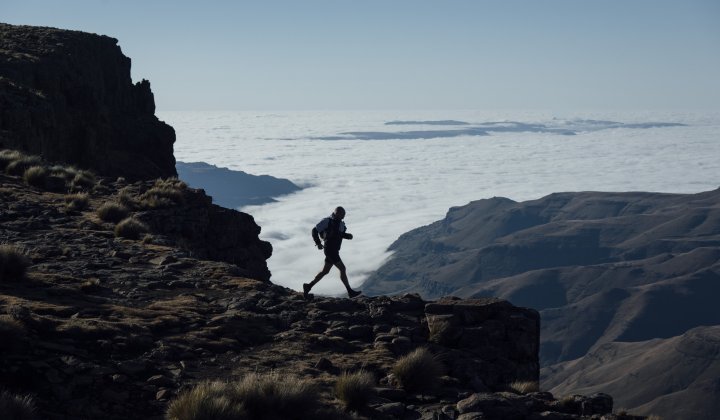A decade ago, many of the best performers in Africa were resource-rich countries such as Sierra Leone, Equatorial Guinea and Chad. In 2018, more diversified economies dominate the list of high-growth states. This shows both a maturing of the growth story in Africa but also indicates the impact of factors such as commodity dependency, governance and planning on economic outcomes.
This article looks at some of the variegated performance of African economies in 2018 in sub-Saharan Africa, focusing on the high-growth performers, a selection of countries that are unpredictable and the “almost rans”, who had a lot going for them but have failed to realise their potential over the past few years.
TOP PERFORMERS
Africa’s top performers of the past few years have a few things in common: investment in infrastructure, long-term planning, supportive governance and political stability.
By most measures, the top of the growth league in Africa is Ghana with projected growth of 8.3% in 2018 (World Bank). Growth, largely driven by oil and gold exports, jumped from 3.7% in 2016 to 8.5% last year. The country has recently come out of an IMF bailout programme following the fiscal crisis of 2015, precipitated by lower than expected oil receipts that year coupled with poor budgetary management.
Solid governance and adherence to the IMF’s management principles along with rising oil prices and production have set Ghana firmly on a growth path for 2018 and beyond. A downside is that revenues remain dependent on commodities – oil, gold and cocoa primarily – despite a growing services and agricultural sector.
Vying for top position in the growth stakes is an economy with a very different economic structure and history – Ethiopia. The second-most populous country in sub-Saharan Africa with 108 million people at last count, Ethiopia has grown mainly on the back of agriculture, manufacturing and services. It has had sustained growth of about 10% a year for a decade and in 2018, growth was projected at 8.2%. Ethiopia is an example of a country that has succeeded through planning and vision rather than resources.
The economy has benefited from strong state-led investment in the past with the aim of addressing pervasive poverty and creating an industrial, export-led economy. Past leaders have leveraged Ethiopia’s strong relationship with China to bolster growth and in addition to state-led Chinese investment, private Chinese companies have created more than 28 000 jobs in Ethiopia, mainly in the manufacturing sector.
The country continues to prioritise tourism and has built its national airline into the continent’s top carrier, with strong investments in ancillary areas such as flight training and catering facilities. Large infrastructure projects underpin the national project including the building of the $4-billion, 6 450MW Grand Renaissance Dam and the $3-billion, 750km railway line linking Addis Ababa to the port of Djibouti.
Ethiopia’s new leader, Prime Minister Abiy Ahmed, is taking the country along a new market-driven path by privatising state-owned entities and opening up formerly closed sectors to foreign investment.
Côte d’Ivoire is also very much “in” in 2018, enjoying the fruits of high investment in infrastructure, good governance and solid planning. Driven by investment and consumption, GDP grew on average by 9% per year from 2012 to 2015 and it is expected to maintain this momentum in 2018.
The country has worked hard to rebuild the economy after a damaging civil war that ended in 2007. Under the guiding hand of the IMF, the country managed to re-establish multilateral relations, get public finances in order and begin a process of structural reform. In 2014 and 2015 it was ranked in the top 10 best-performing countries in the World Bank’s Doing Business reports.
It is well integrated with international markets for its exports, mainly cocoa, gold and natural gas and is positioning itself as a logistics hub in West Africa. The country is also benefiting from the return of the African Development Bank headquarters to Abidjan in 2014 after an 11-year absence due to civil war.
Senegal doesn’t get as much press as the other countries in the Top Performers category but it has been quietly plugging away at its development programme – Emerging Senegal Plan – which aims to make it a middle-income country by 2035. It is centred on 27 infrastructure projects and 17 structural reforms aimed at attracting foreign investment, and reducing poverty and inequality. It has been given a boost by the discovery of oil and gas reserves near the border with Mauritania, itself an oil producer.
The country has enjoyed several years of growth above 6%. In 2018, it is expected to continue strong growth that topped 6.8% last year. It faces an election in 2019 but there are no red flags as the country is one of the most politically stable in Africa.
Rwanda has become best known not for high growth – which is expected to reach a not too shabby 7.2% in 2018 – as much as the efficiency of its economy, driven from the front by President Paul Kagame. The leader has tried to offset the liabilities of being a small and landlocked country by making Rwanda attractive to investors and to build what assets it does have, such as tourism and mining. More than 50 mining licences are to be awarded this year for gold, tin and tantalum with a view to attracting more than $2 billion in investment into the sector.
The government is also trying to attract businesses to use Rwanda as a regional hub by improving the business climate and developing the ICT and logistics sectors. And it looks like this strategy is working with $1.7 billion in new investment registered in 2017, a nearly 100% increase over the $800 million it netted in 2007.
VOLATILE
Tanzania is rated as a top performer currently by most analysts. The country has averaged economic growth of between 6-7% for the past decade and in 2018 this is expected to reach 6.8%. However, there is much that could still go wrong to disrupt that positive trajectory.
Volatile president, John Magufuli, has become a force to be reckoned with as he battles foreign investors in a quest for greater empowerment for his people and proceeds from the country’s resources.
The president has accused international mining firms of false valuations of exports, tax evasion and other criminal acts and has made tax demands, seized a consignment of diamonds and introduced a ban on concentrate exports. In 2018, the fiscal and regulatory regime of the mining sector was overhauled to allow the government to renegotiate mining and energy company contracts and forcing miners to use only 100% Tanzanian-owned banks for their dealings in the country.
The sum of this is that miners have either pulled back on expansion, cut back their operations or avoided new investment in Tanzania. The country also faces problems in the exploitation of the rich gas reserves off its southern coast. Negotiations on the commercial framework agreement for the development of a liquefied natural gas (LNG) plant have been long delayed because of disagreements between the government and international oil companies on the terms of engagement.
South Africa, given the size of sophistication of its economy and its global integration, is always vital to any analysis of the continent despite its very low growth rates over the past decade. But in recent years, its fortunes have reached new lows in the post-apartheid era with a persistent and damaging strategy of state capture allegedly led by former president, Jacob Zuma, members of his cabinet and other powerful people. This has served to gradually further impoverish the country and undermine key institutions of state. These factors have contributed to costly ratings downgrades that have relegated its long-term debt and credit ratings to junk status.
Policy uncertainty persists under President Cyril Ramaphosa although improving governance and attempts to halt rising debt and arrest the attack on institutions are signalling a return to normality. The World Bank projects that growth will pick up slightly to 1.1% this year and increase further in 2019 barring any unforeseen political or economic upsets.
Zimbabwe is regaining some stature in discussions about African economies after years in the wilderness as a result of its unique economic circumstances under three decades of misrule by former president Robert Mugabe up to 2017. With a new president, Emmerson Mnangagwa, Zimbabwe has an opportunity to build its battered economy, which is suffering from serious liquidity challenges, foreign exchange shortages and low investment in existing assets and infrastructure. It is a tough task and relies on strong and accountable leadership, the rebuilding of trust with the domestic and foreign investors and predictable policy.
ALMOST RANS
Nigeria, Angola and Mozambique have been, variously, among the best-performing or fastest-growing nations at one time or another but they have each squandered their assets because of poor governance, lazy economic policies and political expediency. All three should be in the list of top performers but instead, by their own hand, have become the almost rans.
Angola and Nigeria have both undergone similar trajectories since the bottom fell out of the oil price, on which they depend for most of their revenues and foreign exchange receipts, from 2014. With the oil tide out, their failure to sufficiently diversify not just their economies but particularly their revenue streams, has been laid bare.
Both countries are now rebuilding after recession. Nigeria’s growth fell from just below 7% in 2014 to -1.6% in 2015 and 1% in 2016 while Angola reported zero growth in 2016. Critical foreign exchange shortages are being addressed and currency management has become more flexible as growth starts to pick up and the wheels of business start to turn again.
In Angola, the World Bank projects growth of 1.6% this year from 1.2% in 2017, while in Nigeria growth of 2.1% is predicted for this year by the IMF and 2.3% in 2019 although these are largely premised on rising oil prices.
Angola has a chance to modernise and diversify its economy under new president, João Lourenço, who has started dismantling the 38-year legacy of former president José Eduardo Dos Santos. Nigeria, which goes into a hard-fought election in early 2019, looks like it may have another four years of ageing incumbent Muhammadu Buhari unless the opposition can field a winning candidate.
Mozambique, once regarded as one of Africa’s best performers, is an almost insolvent country that is battling to service its unsustainable debts or engage international lenders. In ratcheting up more than $2 billion of secret debt through dubious deals in 2016, and defaulting on its debt payments in 2017, it has lost the budgetary support of the IMF and donors and alienated itself from international funders. The government is now relying on investments in its gas fields to provide much-needed liquidity although this is still a way off, with developments delayed by soft commodity prices in the recent past.
Growth has fallen from the average of 7% growth between 2011 and 2015 to 3.6% in 2016 and 3.1% in 2017, according to the World Bank which predicts a similar trajectory in 2018.
Mozambique is an example of how quickly things can go wrong in high-growth economies with great potential if the foundations are not firmly rooted in sustainable policies, strong institutions and accountable governance.
...Ethiopia has grown mainly on the back of agriculture, manufacturing and services.
...miners have either pulled back on expansion, cut back their operations or avoided new investment in Tanzania.
Zimbabwe is regaining some stature...
Mozambique...is an almost insolvent country...




